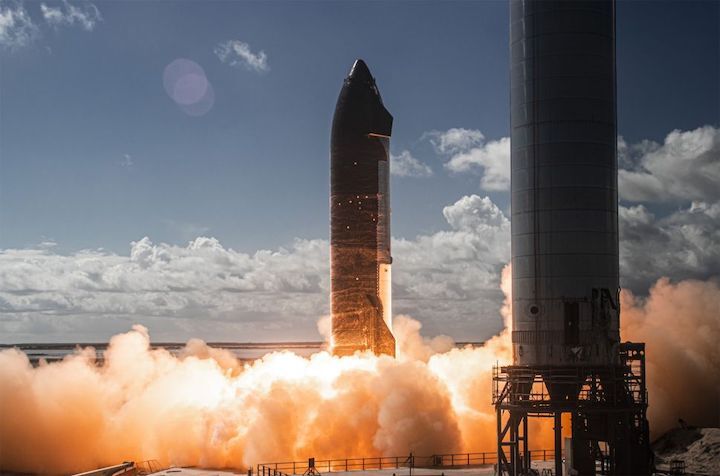11.02.2022
The presentation starts at 9 p.m. EST tonight (Feb. 10; 0200 Feb. 11 GMT).

This SpaceX photo shows the first test-fire of six Raptor engines on the company's Starship SN20 rocket prototype on Nov. 12, 2021 at the Starbase facility in near Boca Chica Village in South Texas. A Starship Super Heavy booster stands at right. (Image credit: SpaceX)
Elon Musk will give a status update on SpaceX's huge Starship rocket tonight (Feb. 10), and we expect the company will stream it live online.
The presentation will begin at 9 p.m. EST (0200 Feb. 11 GMT). If SpaceX shares a webcast, you'll be able to watch live here at Space.com, or directly via the company.
There will be some eye candy to reel you in as well: Musk will speak at Starbase, the South Texas facility where SpaceX builds, tests and launches Starshipvehicles, and he'll have a fully stacked Starship behind him as a visual aid.
SpaceX is developing Starship to take people and cargo to the moon, Mars and other distant destinations, and to perform a wide variety of other tasks as well. For example, Musk has said that he envisions the vehicle eventually carrying passengers on superfast "point-to-point" trips here on Earth.
Starship consists of two elements: a giant first-stage booster known as Super Heavy and a 165-foot-tall (50 meters) upper-stage spacecraft called Starship. Both of these pieces are designed to be fully and rapidly reusable, the breakthrough that Musk and SpaceX believe is necessary to make Mars colonization and other ambitious spaceflight feats economically feasible.
The fully stacked Starship that will serve as Musk's backdrop tonight will get off the ground soon, if all goes according to plan. The vehicle is scheduled to launch on the Starship program's first-ever orbital test flight, a milestone that could occur early next month, provided the U.S. Federal Aviation Administration wraps up an environmental assessment of Starbase by Feb. 28 as planned.
Tonight's presentation should be relatively meaty, for it'll be the first formal Starship update that Musk has given since September 2019. (The billionaire entrepreneur regularly doles out small Starship details via Twitter, however.)
The first of those presentations occurred in the fall of 2016, when Musk unveiled the broad outlines of SpaceX's Mars-colonization architecture, which was then known as the Interplanetary Transport System (ITS).
The following September, Musk revealed that the company had rebranded the ITS as the BFR (short for "Big Falcon Rocket" or, more playfully, "Big F***ing Rocket). He also announced, among other things, that SpaceX aimed to fly people to Mars by 2024 (which does not seem like it's going to happen) and that the company plans to eventually phase out all of its other spaceflight systems, letting the BFR carry the entire load.
In 2018, we learned that the BFR would be taller than recently envisioned — about 387 feet (118 m) when fully stacked, compared with the 348 feet (106 m) that Musk had cited the previous year (though the original ITS idea called for a vehicle 400 feet, or 122 m tall). Musk's 2018 talk also announced the first BFR customer — Japanese billionaire Yusaku Maezawa, who booked a round-the-moon trip aboard the vehicle, with launch targeted for 2023.
During his September 2019 presentation, Musk said that the Starship spacecraft will be capable of carrying about 100 people at a time, and he added that the company aimed to launch its first orbital test flight within the next six months. (The billionaire entrepreneur had announced the name change from BFR to Starship in November 2018, via Twitter.)
What will we learn about Starship plans and progress tonight? You'll have to tune in to find out!
Quelle: SC
